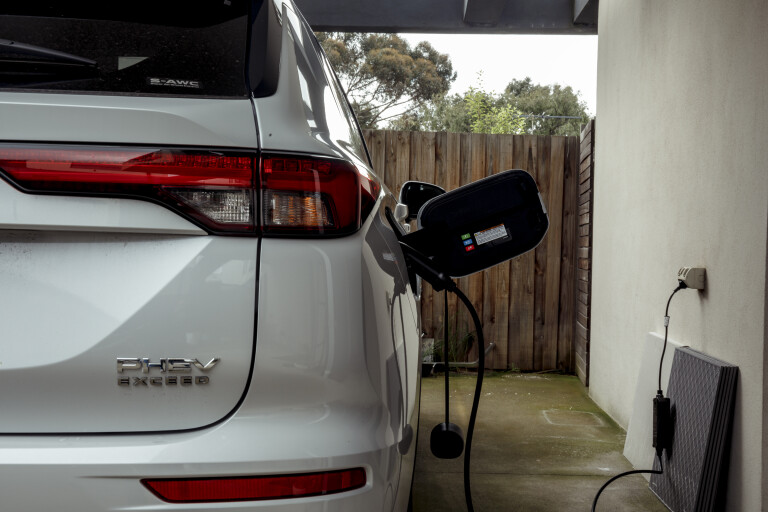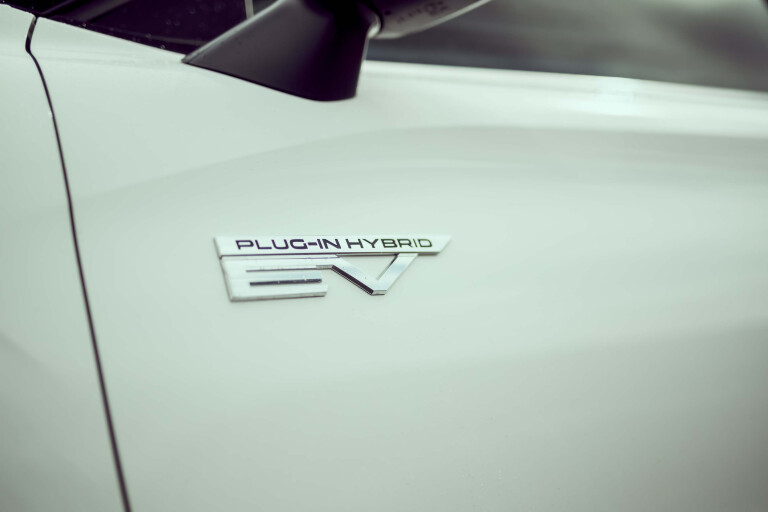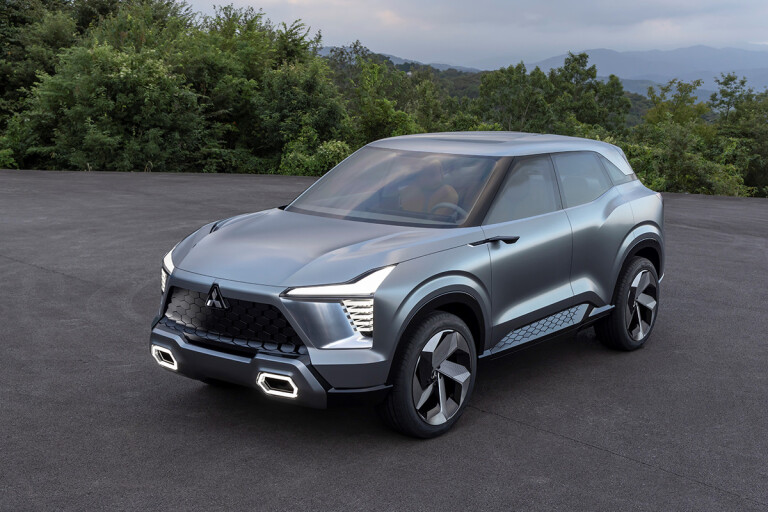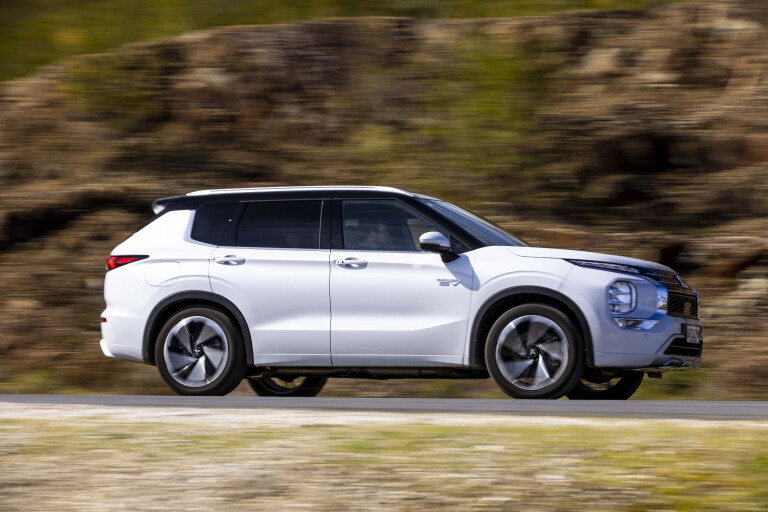
While Toyota Australia has been copping flak from Greenpeace for dragging its heels on a local EV rollout and Toyota chief Akio Toyota attempts to temper expectations on EV proliferation, the Japanese auto giant’s cautious electric vehicle strategy bears some similarity to that of one of its long-time rivals: Mitsubishi Motors.
Speaking with Wheels Media at Mitsubishi's Tokyo headquarters, Takashi Shirakawa, general manager of EV powertrain engineering, said that until battery technologies mature further, a more holistic approach to reducing carbon emissions is necessary.
“Sooner or later our vehicles need to be a battery EV type. We do need to transform from plug-in hybrid to battery [EV], but we need to have two breakthroughs,” Shirakawa explained.
“The first one is getting battery supply stable enough, and the second is getting energy density to be higher, like in a solid-state battery. Those are the two breakthroughs required to go into a full battery EV [lineup].”

But until then, Mitsubishi’s emissions reduction plan will track a little differently to the likes of Volkswagen, Renault and Mercedes-Benz, who are all in the midst of a concerted conversion to entirely battery-powered model lineups. For Mitsubishi, its electrification strategy will depend on the vehicle’s size: small cars will go down an EV pathway, while larger vehicles will be offered as PHEVs.
“For example, an Outlander is defined as a larger vehicle in our case,” Shirakawa explained. “An Eclipse Cross is a little bit smaller than an Outlander, but from an engineering point of view it’s in the same category.”
According to Shirakawa, it is vehicles smaller than the Eclipse Cross – B-segment hatches, sedans and SUVs – that would reap the greatest environmental benefit from going fully electric, thanks to their low weight requiring less battery capacity to generate acceptable range and driving performance.
By 2030, Mitsubishi aims to have all of its models electrified in some way, with 50 per cent of its lineup being electric vehicles.

But why the two-tier approach? Because by Mitsubishi’s maths, replacing every vehicle on the planet with an all-electric equivalent isn’t just impossible from a resources point of view, it isn’t necessarily the most environmentally-friendly strategy either.
While lithium tends to get the bigger headlines, it’s cobalt that’s the larger resource bottleneck when it comes to battery cathode materials. Mitsubishi’s analysis shows that there aren’t enough known cobalt reserves in the ground to allow all vehicles in the global market (a number estimated to be two billion units by 2050, a date when most manufacturers expect to fully convert to EV offerings and when most major economies bar China and India expect to reach carbon neutrality) to be battery-electric vehicles.
Nickel also presents a resource crunch. While it would take less than a quarter of the world’s remaining nickel deposits to achieve a full EV transition, the mineral is in high demand across several industries, particularly in the production of stainless steel.
By Mitsubishi’s maths, replacing every vehicle on the planet with an all-electric equivalent isn’t just impossible from a resources point of view, it isn’t necessarily the most environmentally-friendly strategy either

The idea of equipping all cars with resource-intensive battery packs is, by Mitsubishi’s reckoning, a misuse of precious resources – resources that would stretch further by being reserved for lighter vehicles rather than behemoth SUVs like the Tesla Model X, the recently-revealed Polestar 3 and Kia’s upcoming EV9. Not to mention the likes of the 246kWh GMC Hummer EV and 131kWh Ford F-150 Lightning.
Mitsubishi’s two-pronged electrification strategy is now being borne out in Japan, with the June launch of the kei-class eK X EV commuter car (largely identical to the Nissan Sakura EV) providing the still-fresh Outlander PHEV with an all-electric little brother.
With a modest 20kWh battery pack and 180km range, the eK X EV (pronounced “E-K cross”) is strictly geared toward urban usage – but the macro view is that for the same resources needed to make a single BYD Atto3, Nissan Leaf e+ or Hyundai Kona Electric, three Mitsubishi eK X EV’s could be built instead.

It’s the same deal with the Outlander PHEV - which also uses a 20kWh battery pack and boasts a modest electric-only range of 80-odd kilometres, but allows more people to put an electrified car in their driveway per given unit of lithium, cobalt and nickel.
And then, there’s the matter of what’s best from the perspective of life-cycle energy efficiency.
Mitsubishi is well aware of the carbon costs of manufacturing, operating and disposing a car, but while EV critics are eager to claim that the energy costs of battery manufacturing and the CO2-heavy nature of electricity production nullify an EV’s environmental benefits, Shirakawa says that viewpoint doesn’t apply to every region and market.

It does, however, apply to Australia.
Our high mix of dirty fossil fuels like coal and oil puts our average energy CO2 emissions at more than 486 grams per kilowatt-hour (above the global average of 475g/km), making purely combustion-engined vehicles a potentially ‘greener’ option (and bear in mind this is a comparative term) than anything electrified in our market – including a PHEV.
But for countries with average energy emissions around 300g/kWh, the graph looks a lot different. While emissions from burning fuel stay the same, emissions from battery charging and vehicle production and disposal shrink dramatically, giving a plug-in hybrid the lead over pure combustion, regular hybrids and pure electric vehicles.
It’s only in countries where energy is mostly produced from renewables or nuclear energy – many Western European and Nordic countries – where pure EV lifecycle emissions actually creep below that of PHEVs, and by Mitsubishi’s reckoning, it’s only a modest advantage.

However, all of that only applies to larger cars: C, D, and E-segment passenger vehicles and SUVs, not to mention things like the Pajero Sport and Triton. For smaller vehicles, Mitsubishi’s data says that going fully electric is the best means to culling emissions, thanks to their lower weight and smaller battery sizes: hence the launch of the all-electric ek X EV.
According to Shirakawa, only the arrival of solid-state batteries – which are still in the experimental phase of development – would strengthen the argument for purely electric large cars, although that could come at the expense of higher production-related costs and associated CO2 emissions.

COMMENTS